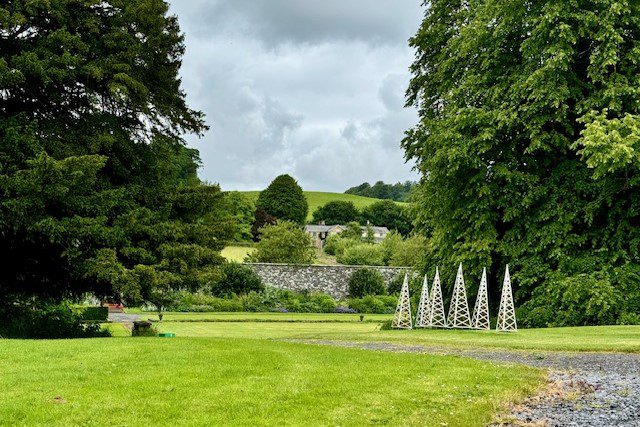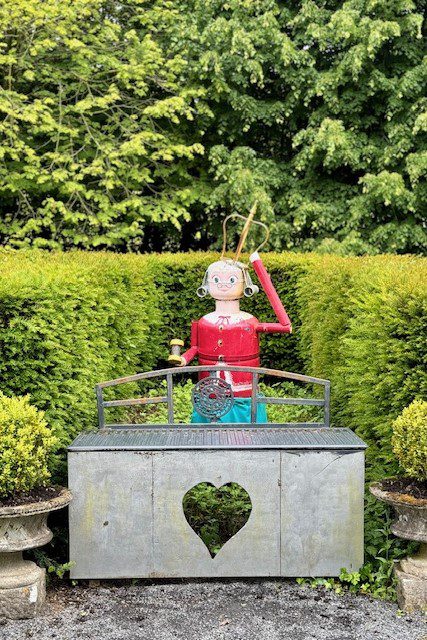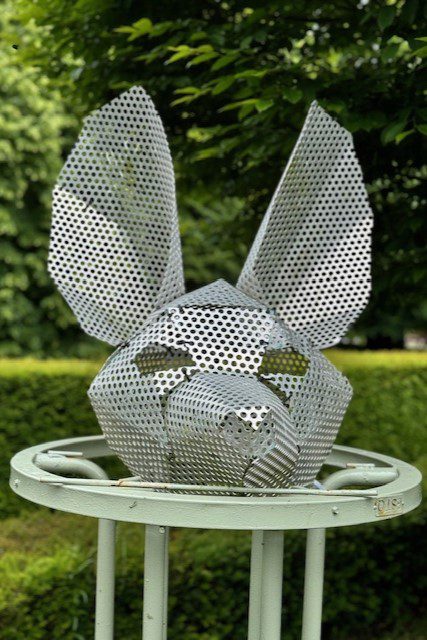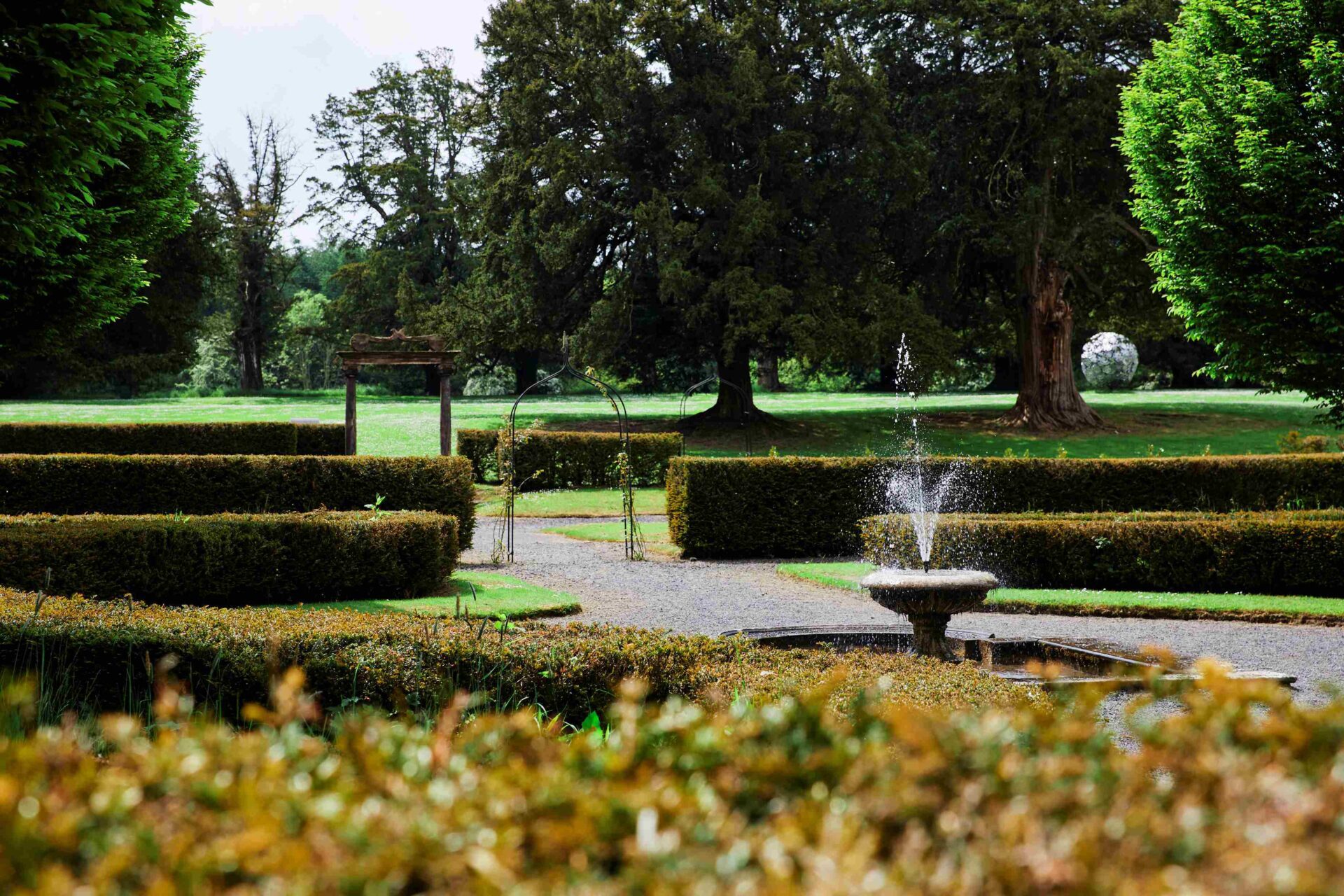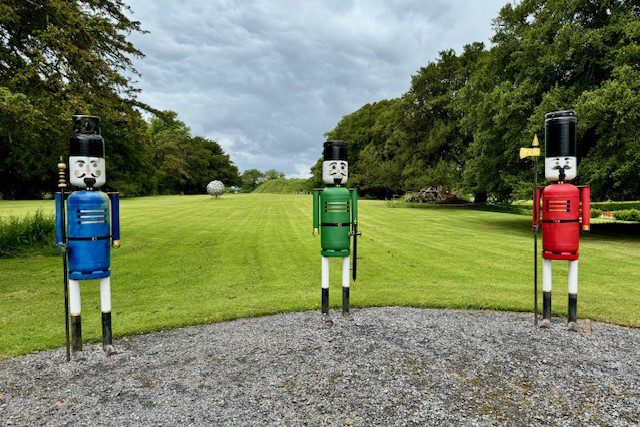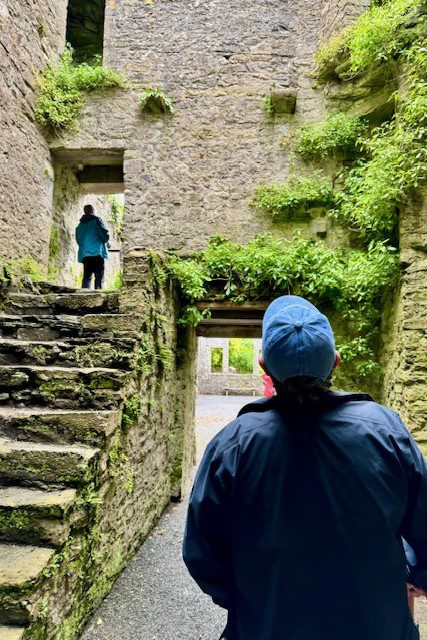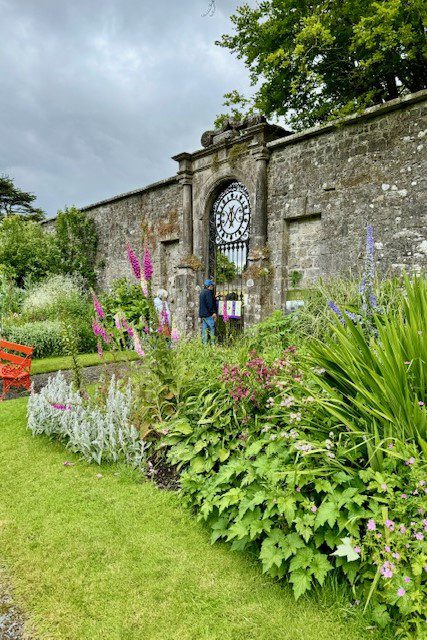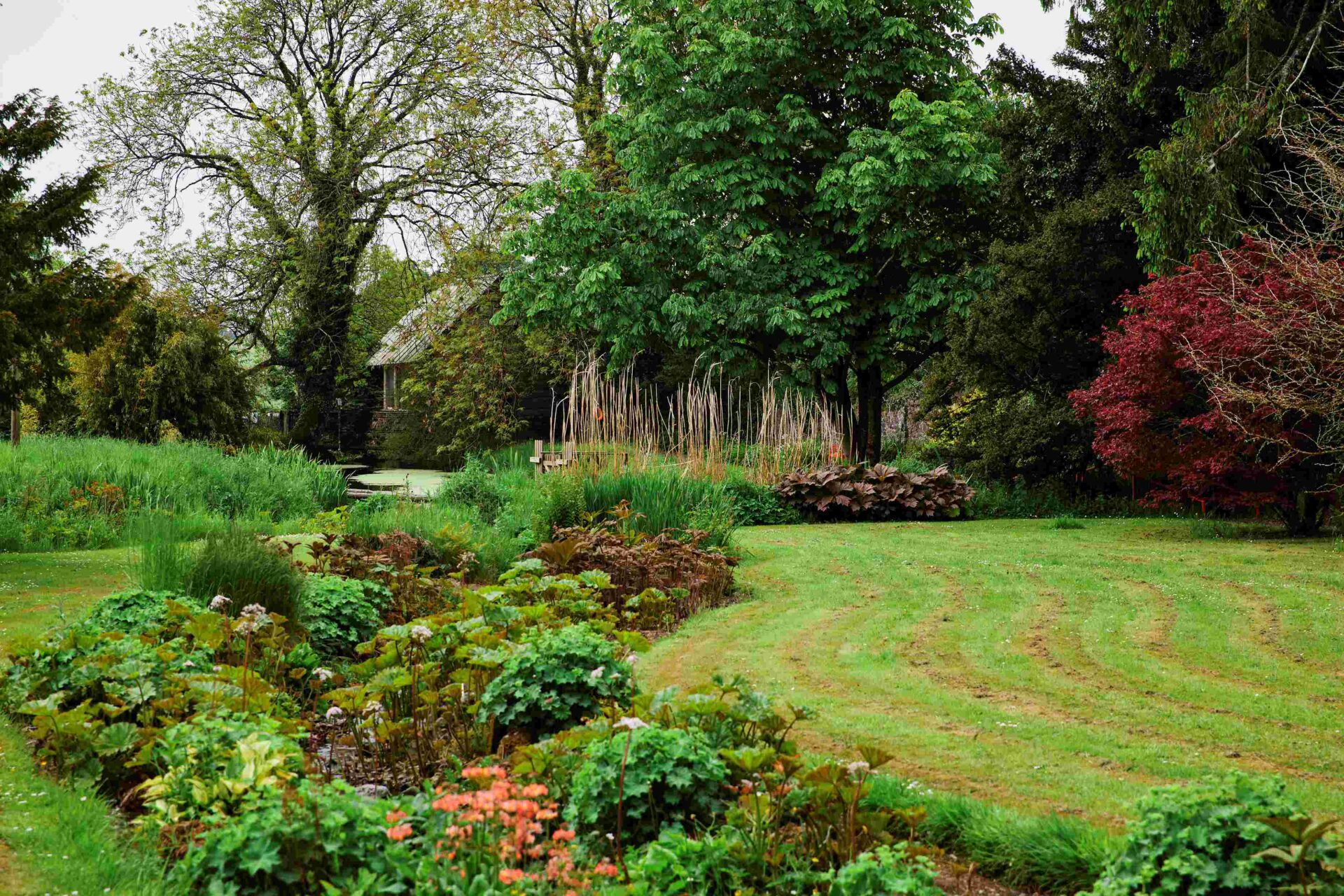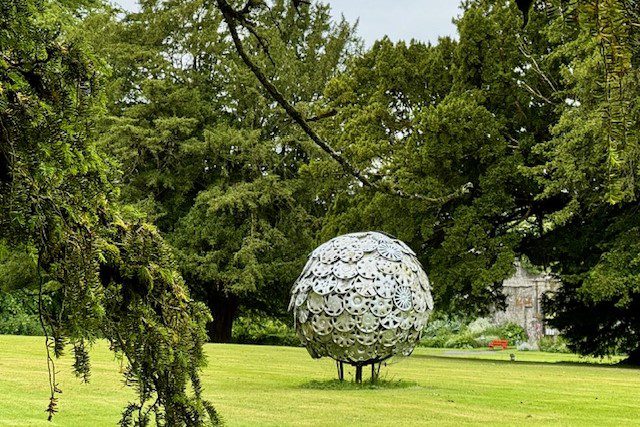We were lucky with the weather on Saturday 15 June, when a group of IGPS members from the north and south of Ireland gathered to visit Loughcrew Historic Gardens, near Oldcastle, Co. Meath. Close to the border with Co. Cavan, this area of the Boyne Valley is a truly undiscovered region of rolling hills and gigantic trees, full of ancient myths, phantom buildings and sacred places.
The Loughcrew Estate has been home of Naper family since 17th century and lies below 5,000 year-old hilltop passage graves and has an extraordinary history, with the remains of 16th, 17th, 18th and 19th century houses and gardens, plus the ruined church of St Oliver Plunkett, who was born there in 1625. Information and maps are available in the entrance coffee shop, where we met our host and guide, Emily Naper, and there are many explanatory boards and whimsical sculptures made from recycled materials throughout the garden.
The garden has been restored under the ‘Great Gardens of Ireland’ scheme, and is now open daily as a landscape and sculpture park, while also hosting weddings and other events. Our group enjoyed a walk around the substantial grounds, viewing all of the main features.
We began with the atmospheric St. Oliver’s Church, tower house and graveyard, and the 400 year-old Yew Walk beside it. Ornate wooden gates led to a vast parkland surrounded by a panorama of hills and guarded by a row of colourful Nutcracker-style soldiers.
The cobbled foundations of the 19th century house now form a terraced garden with a central water fountain, and the imposing gates and walls of the Walled Garden stand nearby. Along these walls there is a well-planted herbaceous border, designed by Daphne Shackleton.
After that there is a rock garden and the Grotesque Folly, featuring fantastic murals and stucco-like pillars, and from there we entered the water gardens, around the old Mill house.
A number of mature exotic trees were pointed out as we made our way around a pond and the Viewing Mound, originally a medieval “motte and baillie”. We returned through the Yew Walk, entertained by a variety of clever sculpture installations made from upcycled materials on either side. These included a leaping salmon formed by CD discs, a giant sphere made of metal hubcaps and a small army of giant ants!
For most of those in our group, this was a first visit and it was agreed that it made a very worthwhile and interesting day trip and worth repeating to absorb all that there is to explore.
Report by Sara Whelan

